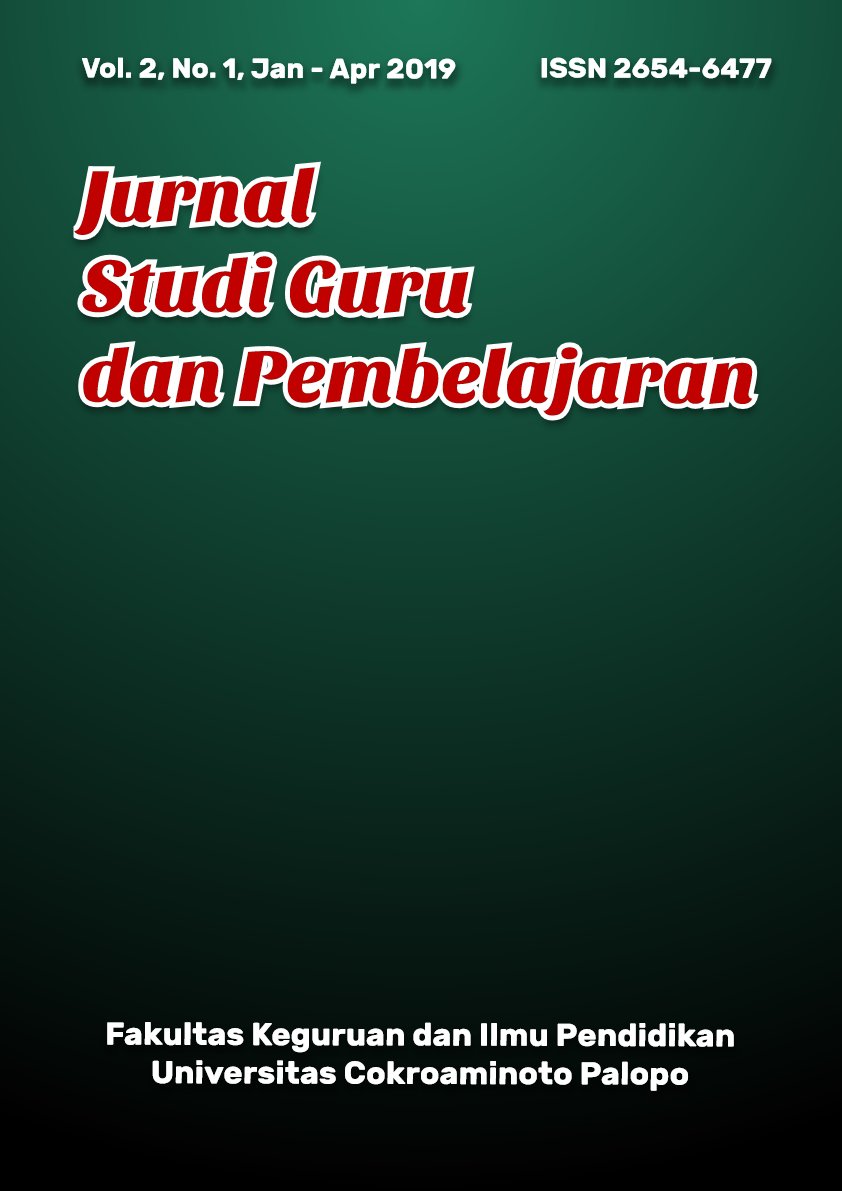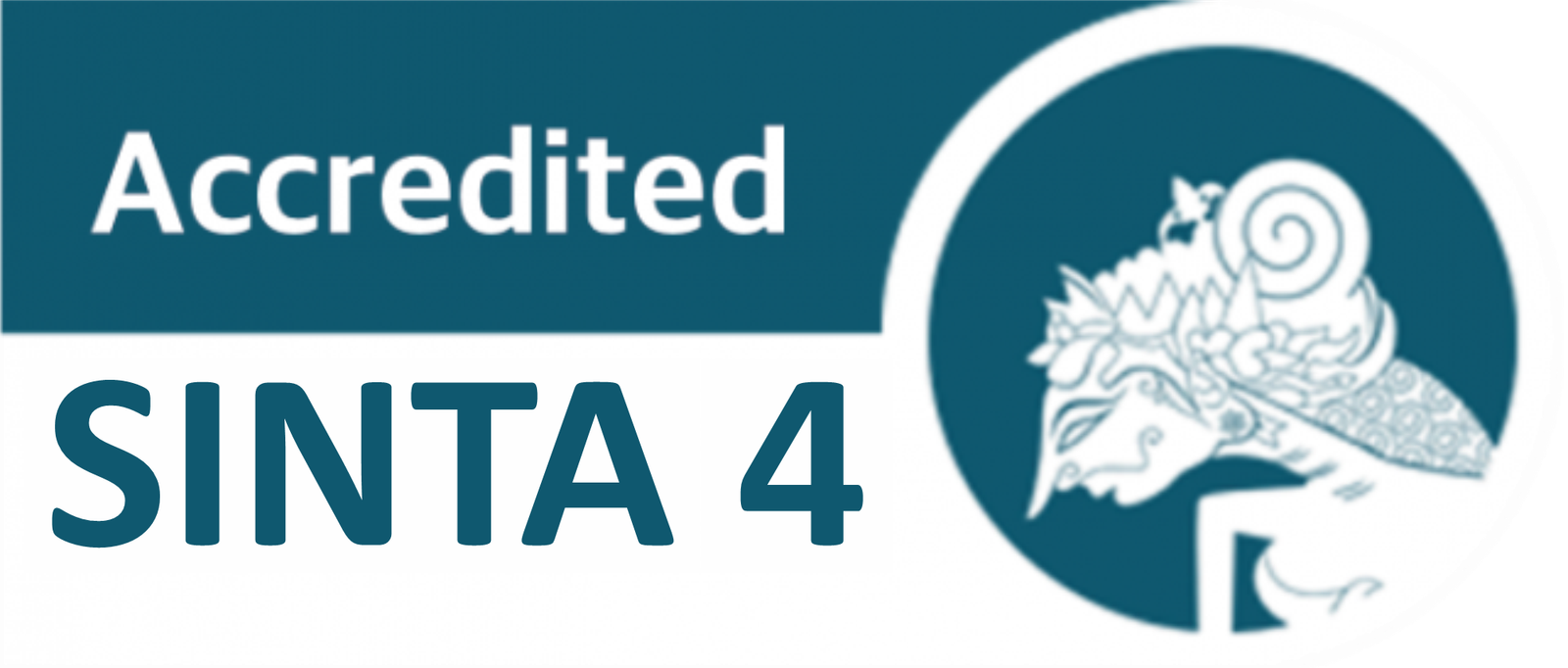Investigating the Beliefs about Self of College Students in Solving Mathematical Problem
DOI:
https://doi.org/10.30605/jsgp.2.1.2019.24Keywords:
beliefs system, beliefs about self, college studentAbstract
Human life is about an entity which always experiences the changes. Each sector of our life involving education, technology, economics, and social will be advanced gradually. These advancements let everyone to encounter the new problems or challenges for sure. Knowing this fact, ability in solving a problem is a must for us to have. The process of solving problem is influenced by several factors, like belief which is called belief system in mathematics education. Mathematics education is assumed to be able to grow and enhance one’s beliefs system in solving a problem. This research is a case study which concerns a part of beliefs system namely beliefs about self. This study aimed to investigate the beliefs about self of college students who are 18-22 years old in solving mathematical problem. Four voluntary participants were given mathematical problem and interviewed separately. The result shows that each participant has beliefs about self which is positive or negative oriented. One of the factors promoting the beliefs about self is experience. It is recommended to conduct a similar study with larger sample.
Downloads
References
Bayaga, A., Wadesango, N., & Wadesango, O. V. (2015). Impact of teachers’ beliefs on mathematics education. Africa Education Review, 12(2), 280–293. https://doi.org/10.1080/18146627.2015.1108008 DOI: https://doi.org/10.1080/18146627.2015.1108008
Brown, T. (2016). Rationality and belief in learning mathematics, (December 2015), 75–90. https://doi.org/10.1007/s10649-015-9670-7 DOI: https://doi.org/10.1007/s10649-015-9670-7
Charles, R. T., & Lester, F. (1982). Teaching problem solving; what, why & how. Palo Alto, CA: Dale Seymour
Creswell, J. W. (2013). Research Design: Qualitative, Quantitative, and Mixed Methods Approaches 2nd edition. California: Sage Publications, Inc.
Diemer, M. A., Marchand, A. D., & Mckellar, S. E. (2016). Promotive and Corrosive Factors in African American Students ’ Math Beliefs and Achievement. Journal of Youth and Adolescence, 45(6), 1208–1225. https://doi.org/10.1007/s10964-016-0439-9 DOI: https://doi.org/10.1007/s10964-016-0439-9
Gomez-Chacon, I. M. (2000). Affective influences in the knowledge of mathematics. Educational Studies in Mathematics, 43, 149-168 DOI: https://doi.org/10.1023/A:1017518812079
Grootenboer, P., & Marshman, M. (2016). Mathematics, Affect and Learning, 13–34. https://doi.org/10.1007/978-981-287-679-9 DOI: https://doi.org/10.1007/978-981-287-679-9_2
Hendriana, H., Rohaeti, E.E., & Sumarmo, U. (2017) Hard Skills dan Soft Skills Matematik Siswa. Bandung: Refika Aditama
Hofer, B., & Pintrich, P. (1997). The development of epistemological theories: beliefs about knowledge and knowing and their relationship to learning. Review of Educational Research, 67(1), 88–140 DOI: https://doi.org/10.3102/00346543067001088
Ignacio, N. G., Nieto, L. J. B., & Barona, E. G. (2006). The Affective Domain in Mathematics Learning. International Electronic Journal of Mathematics Education, 1(1), 16–32 DOI: https://doi.org/10.29333/iejme/169
Je, A. (1999). Goals, Values, and Beliefs as Predictors of Achievement and Effort in High School Mathematics Classes 1
Kloosterman, P., & Stage, F. (1992). Measuring beliefs about mathematical problem solving. School Science and Mathematics, 92(3), 109–115 DOI: https://doi.org/10.1111/j.1949-8594.1992.tb12154.x
Lerch, C. M. (2004). Control decisions and personal beliefs: Their effect on solving mathematical problems. Journal of Mathematical Behavior, 23, 21-36 DOI: https://doi.org/10.1016/j.jmathb.2003.12.002
Leder, G. C. (2008). Beliefs: What lies behind the mirror. In B. Sriraman (Ed.), Beliefs and mathematics (pp. 39–54). Charlotte, NC: Information Age Publishing
Martinot, D., & Désert, M. (2007). Awareness of a gender stereotype, personal beliefs and self-perceptions regarding math ability: when boys do not surpass girls, 455–471. https://doi.org/10.1007/s11218-007-9028-9 DOI: https://doi.org/10.1007/s11218-007-9028-9
Mcleod, D. B., & Mcleod, S. H. (2002). Chapter 7 Synthesis - Beliefs And Mathematics Education: Implications For Learning, Teaching, And Research DOI: https://doi.org/10.1007/0-306-47958-3_7
Mtetwa, D., & Garofalo, J. (n.d.). Beliefs About Mathematics: A N Overlooked Aspect Of Student Difficulties, (May 1989) DOI: https://doi.org/10.1177/105345128902400511
Op, P., Corte, E. De, & Verschaffel, L. (2006). Epistemic dimensions of students ’ mathematics-related belief systems, 45, 57–70. https://doi.org/10.1016/j.ijer.2006.08.004 DOI: https://doi.org/10.1016/j.ijer.2006.08.004
Ozturk, T., & Guven, B. (2016). Evaluating Students ’ Beliefs in Problem Solving Process: A Case Study. Eurasia Journal of Mathematics, Science & Technology Education, 12(2), 411–429. https://doi.org/10.12973/eurasia.2016.1208a DOI: https://doi.org/10.12973/eurasia.2016.1208a
Radford, L. (2015). From beliefs to dynamic affect systems in mathematics education. https://doi.org/10.1007/978-3-319-06808-4 DOI: https://doi.org/10.1007/978-3-319-06808-4
Schoenfeld, A. H. (1985). Mathematical problem solving. Orlando, FL: Academic Press
Schoenfeld, A. H. (1992). Learning to think mathematically: Problem solving, metacognition, and sense making in mathematics. In D. A. Grouws (Ed.), Handbook of research on mathematics teaching (pp. 334–370). New York: MacMillan Publishing
Schorr, R. Y., & Warner, L. B. (2011). Beliefs and engagement structures : behind the affective dimension of mathematical learning, 547–560. https://doi.org/10.1007/s11858-011-0348-z DOI: https://doi.org/10.1007/s11858-011-0348-z
Stylianides, A. J., & Stylianides, G. J. (2014). Impacting positively on students’ mathematical problemsolving beliefs: An instructional intervention of short duration. The Journal of Mathematical Behavior, 23, 8-29 DOI: https://doi.org/10.1016/j.jmathb.2013.08.005
Suherman, E. (2003). Strategi Pembelajaran Matematika Kontemporer (Common TextBook). rev.ed. Bandung: UPI
Viholainen, A., Asikainen, M., & Hirvonen, P. E. (2014). Mathematics student teachers’ epistemological beliefs about the nature of mathematics and the goals of mathematics teaching and learning in the beginning of their studies. Eurasia Journal of Mathematics, Science & Technology Education, 10(2), 159-171. https://doi.org/10.12973/eurasia.2014.1028a DOI: https://doi.org/10.12973/eurasia.2014.1028a
Downloads
Published
How to Cite
Issue
Section
License
In submitting the manuscript to the journal, the authors certify that:
- They are authorized by their co-authors to enter into these arrangements.
- The work described has not been formally published before, except in the form of an abstract or as part of a published lecture, review, thesis, or overlay journal.
- That it is not under consideration for publication elsewhere,
- That its publication has been approved by all the author(s) and by the responsible authorities – tacitly or explicitly – of the institutes where the work has been carried out.
- They secure the right to reproduce any material that has already been published or copyrighted elsewhere.
- They agree to the following license and copyright agreement.
License and Copyright Agreement
Authors who publish with JSGP agree to the following terms:
- Authors retain copyright and grant the journal right of first publication with the work simultaneously licensed under Creative Commons Attribution License (CC BY-SA 4.0) that allows others to share the work with an acknowledgement of the work's authorship and initial publication in this journal.
- Authors are able to enter into separate, additional contractual arrangements for the non-exclusive distribution of the journal's published version of the work (e.g., post it to an institutional repository or publish it in a book), with an acknowledgement of its initial publication in this journal.
- Authors are permitted and encouraged to post their work online (e.g., in institutional repositories or on their website) prior to and during the submission process, as it can lead to productive exchanges, as well as earlier and greater citation of published work.














